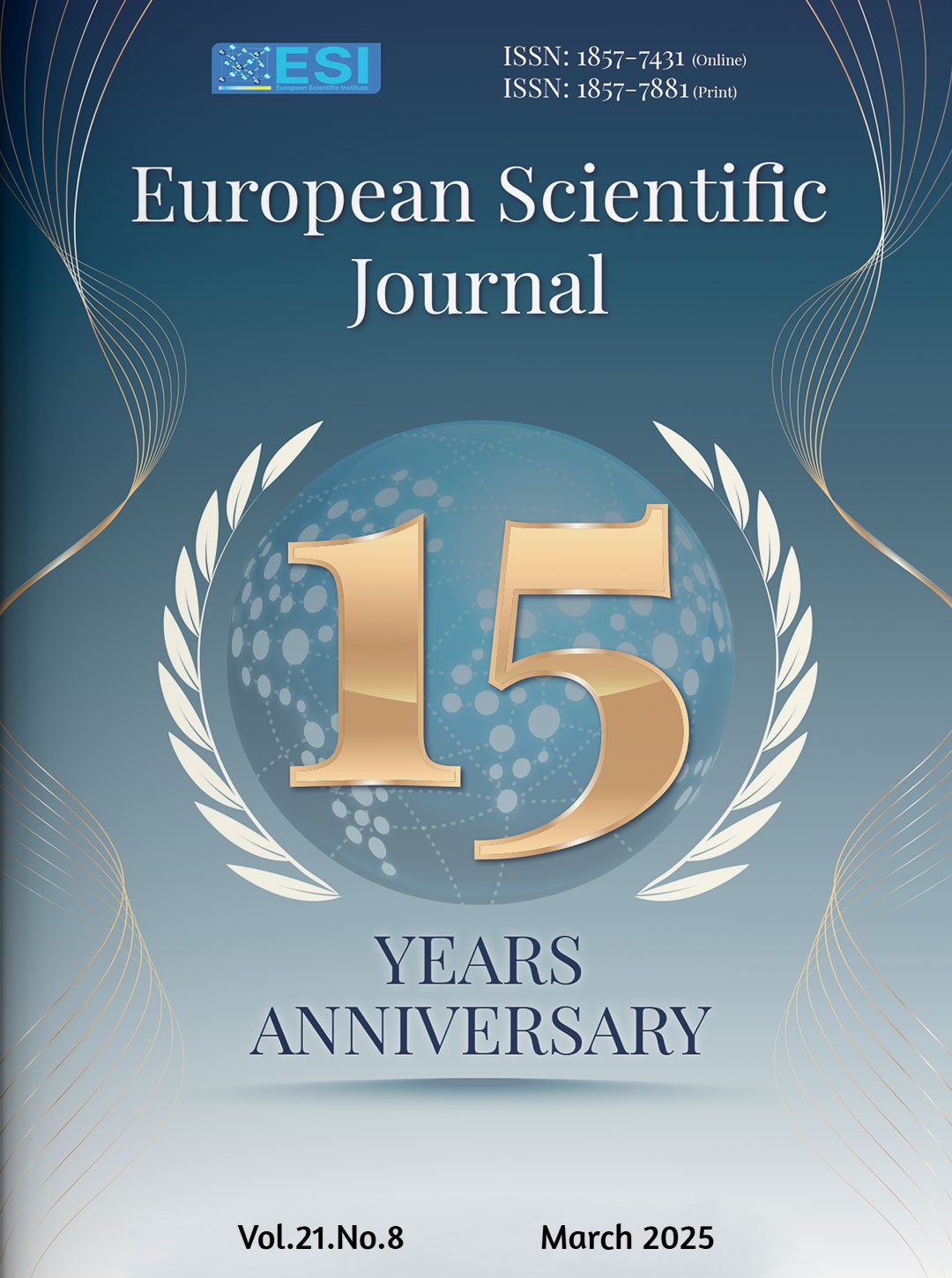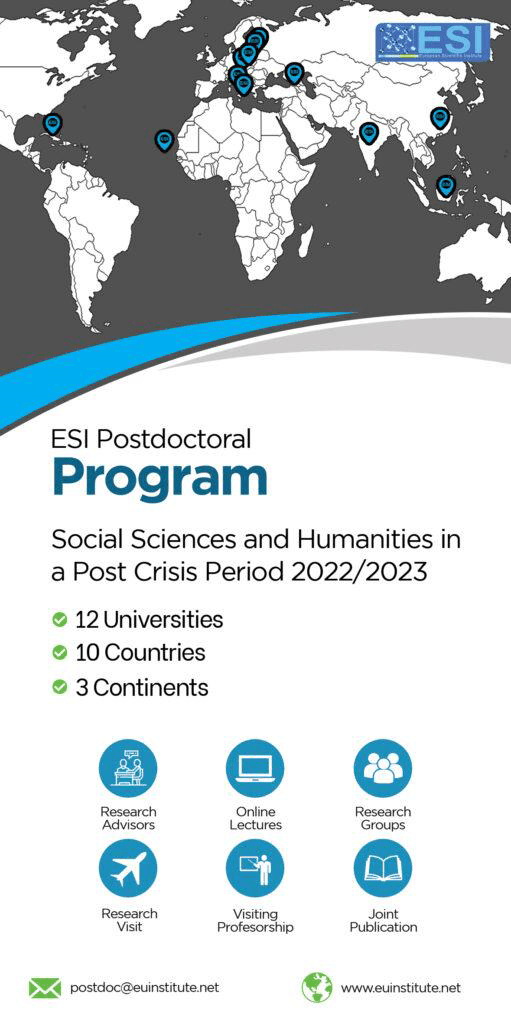Bridging Linguistic Gaps through Translation of COVID-19 Terms from English into Albanian
Abstract
During the critical period of the global COVID-19 outbreak, Albania, like many other nations, faced the urgent need to communicate vital public health information effectively. The selection of appropriate terminology was paramount to ensuring that the public understood the nature of the virus, the measures necessary to prevent its spread, and the overall health strategies implemented by the government. Henceforth, this study aims to identify the COVID-19 terminology used by the Albanian Health Authorities to describe the virus and to analyse the strategies employed in translating these terms from English into Albanian. The research focuses on the period from March 1, 2020, to July 27, 2020, which coincided with the global COVID-19 outbreak. 30 COVID-19-related terms in English and their Albanian equivalents were examined for this purpose. Data for this research was collected from two primary sources: the COVID-19 Terminology Collection from the European Union Terminology Database (IATE) and the Albanian equivalents obtained from news reports published by the healthcare authorities on the Ministry of Health and Social Protection of Albania’s website. The study employed several theoretical frameworks to analyze the translation strategies. Vin and Darbelnet’s translation model, the sociolinguistic model, and the metaphor translation method were utilized to achieve the research objectives. Vin and Darbelnet’s model provided a structured approach to analyzing translation techniques, such as borrowing, calque, literal translation, transposition, modulation, equivalence, and adaptation. The sociolinguistic model helped to understand how social and cultural factors influenced the choice of terminology and its reception by the public. The metaphor translation method was particularly relevant given the widespread use of metaphorical language in describing the pandemic and its effects. The findings offer insights into the most effective translation methods for accurately conveying selected COVID-19 terms in Albanian while preserving the intended stylistic essence of the original terms. The research emphasizes the importance of making controlled linguistic choices during translation rather than freely creating and adopting COVID-19 terminology for public use. Standardizing terminology is essential for clear and consistent communication, particularly during a public health crisis. The study highlights the potential risks of using inconsistent or poorly translated terms, which can lead to confusion, misinformation, and reduced public compliance with health guidelines. Furthermore, the research emphasizes the importance of making controlled linguistic choices during translation rather than freely creating and adopting COVID-19 terminology for public use.
Downloads
Metrics
PlumX Statistics
References
2. Baya, E. 2007. Traducción y medios de comunicación. Notasacerca de los errores gramaticales les máscomunes en la prensaárabe. Puentes.
3. Bober, S., & Willis, C. 2021. The Covid-19 pandemic and minority language media in Europe: The effects of spring 2020 lockdowns. Journal of Multilingual and Multicultural Development.
4. Bowker, L., & Pearson, J. 2002. Working with a specialised language. A practical guide to using corpora. London and New York: Routledge.
5. Cuddy, A., Fiske, T., Kwan, V., Glick, P., Demoulin, S., Leyens, J., & Harris M. B. 2009. Stereotype content model across cultures: Towards universal similarities and some differences. British Journal of Social Psychology 48, no. 1 2009: 1-33;
6. Federici, F., & O’Brien, Sh. 2020. Cas-cading Crisis. Translation and Risk Reduction, Translation in Cascading Crisis, Nueva York: Rout-ledge;
7. Gapparova, A.,, D. 2020. Translation features of medical terms. International Journal of All Research Writings, 1 (10): 5-8.
8. Irzam, S., Risagarniwa, Y. Y., & Sunarn, N. 2020. Conceptual Metaphor about Coronavirus: Cognitive Semantic Analysis.Eralingua: Jurnal Pendidikan Bahasa Asing dan Sastra Vol. 5, No.1, March 2021
9. Jiménez-Crespo, M. Á., & Sánchez, T. 2017. Lexical variation, register and exploitation in medical translation. A comparable corpus study of medical terminology in US websites translated into Spanish. Translation and Interpreting Studies 12 (3): 424-430.
10. Kamberi F, Jaho J, Mechili EA, Sinaj E, Skendo H. 2020. Effect of Covid-19 pandemic on mental health among Albanian people residing in the country and abroad - Implications for mental care. Arch Psychiatr Nurs. 2020 Dec; 34(6):507-512. doi: 10.1016/j.apnu.2020.08.003. Epub 2020 Aug 4. PMID: 33280673; PMCID: PMC7402241
11. Kanglong, L., & K. F. Cheung A. 2022. Translation and Interpreting in the Age of COVID-19, Chapter from the book 'Translation and Interpreting in the Age of COVID-19' 1-11.
12. Kitanovska-Kimovska S., & Neškovska S. 2022. Translating Medical Terminology: Strategies For Translating Covid-19 Terms From English Into Macedonian. Journal Of Contemporary Philology Jcp 2022, 5 (1), 39‒57
13. Lakoff, G. & Jhonson, M. 2003. Metaphors We Live By. Chicago: The University of Chicago Press.
14. Madhi, G., 2020. Albania: public information becomes a casualty of COVID-19. Osservatorio Balcani e Caucaso Transeuropa. Trento, Italia, 2020.
15. https://www.balcanicaucaso.org/eng/Areas/Albania/Albania-public-information-becomes-a-casualty-of-COVID-19-202724
16. Ma, H., Liu, S., Haixia, S., Zidu, X., Li, H., Wu, S., An, F., Jiao, L., & Qing, Q. (2020). COVID Term: A Bilingual Terminology for COVID-19. Available at: https://doi.org/10.21203/rs.3.rs-30923/v1
17. Muller-Boker, U., M., & Saliva, R. 2001. Der Naturschutzi in Nepal im Gesellschaftlichen Kontext. AsiatscheStudien, 105:725-75;XI- Federici, FM. Sociolinguistics, Translation, and Interpreting, 2017, https://discovery.ucl.ac.uk/10051997/3/
18. Musabelliu, M., 2020. Albania political briefing: Governance and COVID-19 in Albania. Weekly Briefing, China CEE Institute. ISSN: 2560-1601 Vol. 28, No. 1 (Al) April 2020. https://china-cee.eu/wp-content/uploads/2020/05/2020p04_Albania.pdf
19. Nassima, K., & Moulay-Lahssan, B. E. 2022. Education and COVID-19: learning Arabic language and perspectives. Electronic Journal of e-Learning. Vol. 19 No. 5.
20. Nassima, K., & Moulay-Lahssan, B. E. (2021). Reflection on the use of the Algerian language: a sociolinguistic analysis of the situation in the time of COVID-19. Tonos Digital, 40, 1-22;
21. Piller, I. 2020. Covid-19 forces us to take linguistic diversity seriously. In 12 perspectives on the pandemic, ed. G. Boomgaarden, De Gruyter. Berlin, 12–17.
22. Tirosh, O. (2020). The Coronavirus, Global Pandemics, and the Role of the Medical Translator and Interpreter.
23. https://www.tomedes.com/translator-hub/coronavirus-medical-translation
24. Wenjie, H., & Rossi, C. 2021. The Cognitive Turn in Metaphor Translation Studies: A Critical Overview. Journal of Translation Studies, 2021, 5 (2), pp. 83-115. HAL-03342406
25. UN ALBANIA COVID-19 SOCIO-ECONOMIC RECOVERY & RESPONSE PLAN JULY 15, 2020, https://www.unicef.org/albania/media/3101/file/UN%20ALBANIA%20COVID-19%20SOCIO-ECONOMIC%20RECOVERY%20&%20RESPONSE%20PLAN.pdf
26. https://www.undp.org/albania/covid-19-pandemic
27. https://www.instat.gov.al/en/covid-19-statistics/
28. COVID-19 Multilingual Terminology Available in IATE. http://cdt.europa.eu/sites/default/files/iate-covid-terminology_export_en-29-04-20.xlsx
29. https://www.investment.com.al/wp-content/uploads/2022/12/EN_AIC-Publication_Summary-on-Acts-and-Measures-COVID-19.pdf
30. THE COVID-19 CRISIS IN ALBANIA, 27 April 2020, https://www.wb6cif.eu/wp-content/uploads/2020/05/Covid-19-response-in-ALB-27.4..pdf
31. Ministry of Health and Social Protection of Albania https://shendetesia.gov.al/covid-19-dhe-vaksinimi-anti-covid/
32. https://www.researchgate.net/publication/352647281_Conceptual_Metaphor_about_Corona_Virus_Cognitive_Semantic_Analysis
33. https://shendetesia.gov.al/koronavirusi-i-ri-dhe-masat-ndaj-tij/
Copyright (c) 2025 Dorjana Klosi Flett

This work is licensed under a Creative Commons Attribution 4.0 International License.








